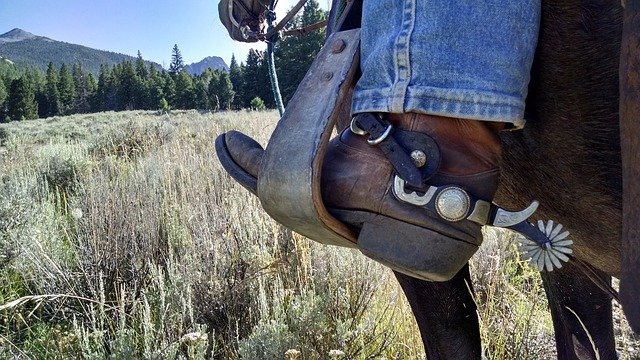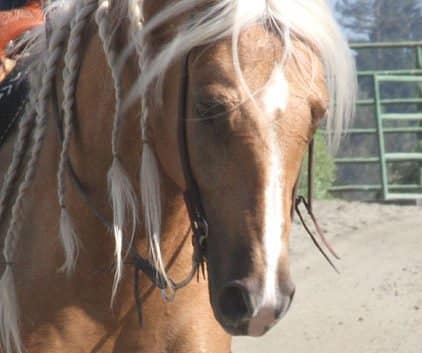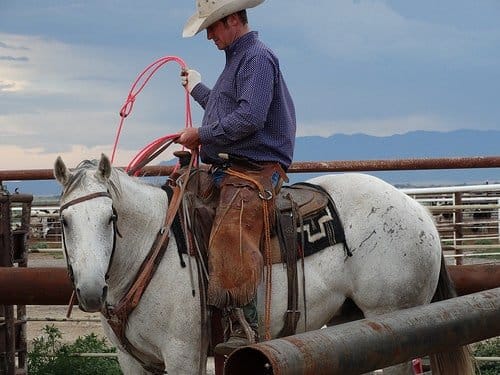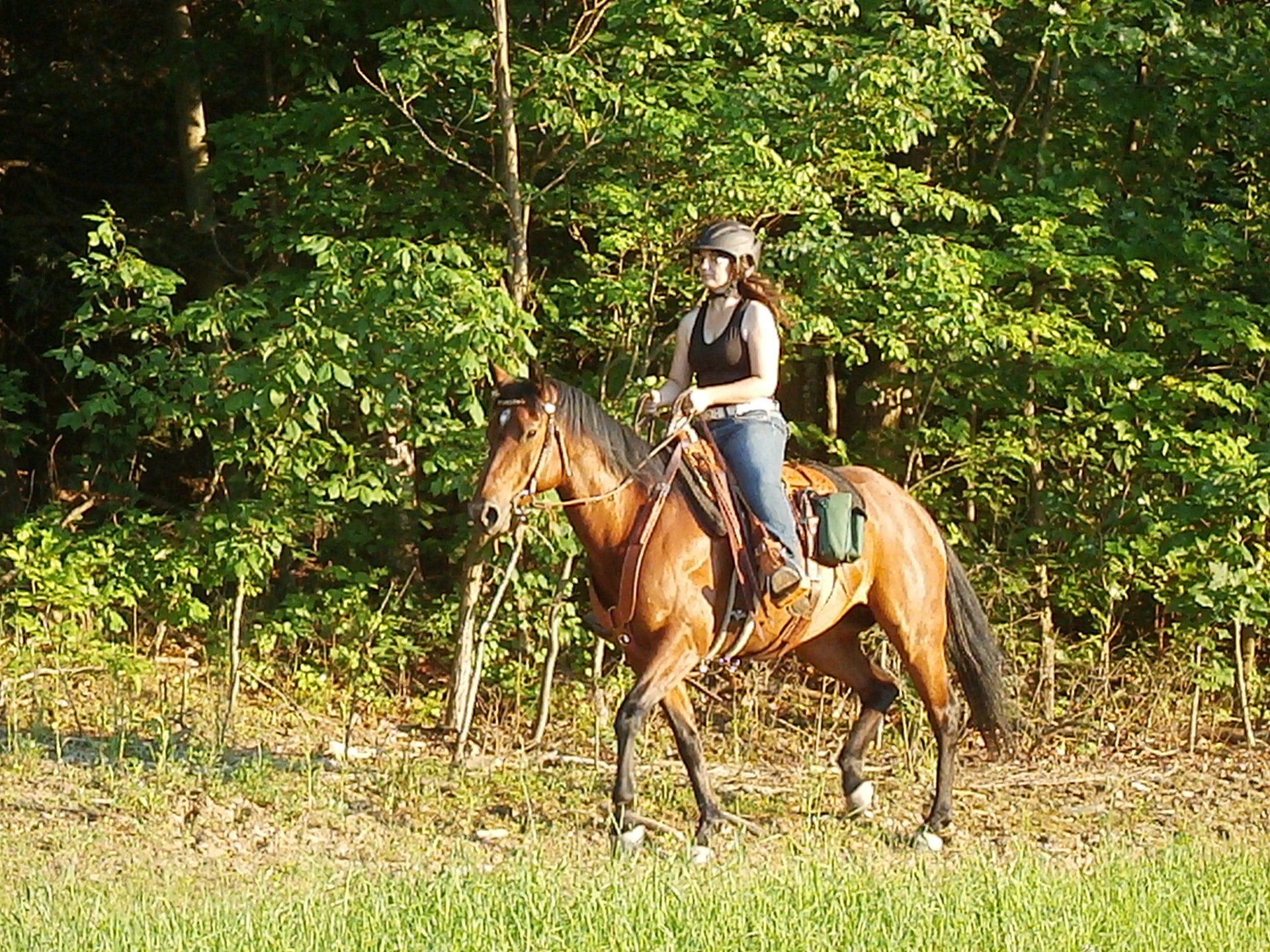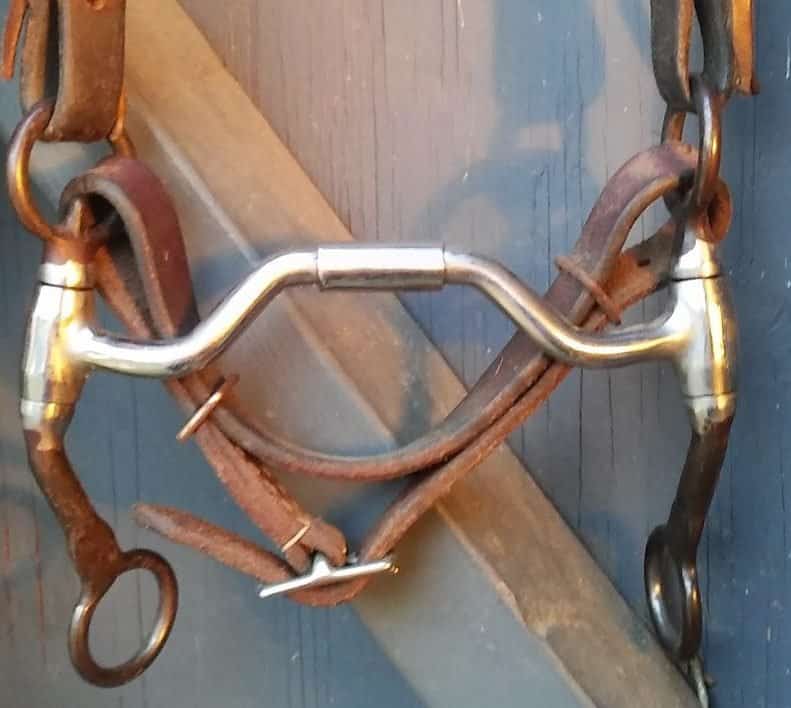
One of the big controversies in the horse world, particularly in the western arena, is over-bitting. The show pen seems to have developed the mentality that bigger is better and so many western show associations have instituted the rule that every horse over 6-years-old must be in a leverage bit.
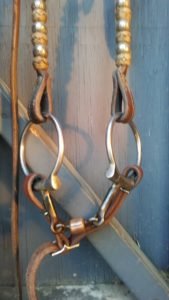
Let me clarify. The big bit band-aid is not referring to those who train the horses to ride in a leverage bit properly. The big bit band-aid is when a horse gets so hard in the mouth that the trainer sees no other option but to use brute force and a series of progressively bigger bits. I am not referring to skilled riders using a finely tuned instrument on a well-trained horse. Leverage bits are perfectly acceptable when used properly with soft hands on a well-trained horse. But softness should always come before leverage. A horse that has not achieved softness in a snaffle cannot achieve softness in leverage.
Ok, back on topic.
This problem was brought to the forefront again for me a few weeks ago when I hauled Moose to a nearby arena to
introduce her to the barrel pattern for the first time. A spectator watching us work complimented our form and then asked a question that, for me, came out of the blue:
“When are you going to put her in a real bit?”
To say I was stumped by the question is an understatement. What did it look like I was riding her in, an imaginary bit? The spectator had just finished marveling at Moose’s form and talent, yet seemed to think that I should be riding her in a bigger bit for no other reason than that’s just what you’re supposed to do.
I was riding Moose in a simple western D-ring. Moose is very light in the mouth and supple in the poll. I have no need to put her in a leverage bit. I do have a few bits on hand when I decide it is time for her to move up to a small leverage bit for western show purposes for classes that need it, but for barrel racing there is no need. I have a little baby leverage that I’ve started putting her in occasionally, but we’re not really doing a lot with it now because we don’t need it yet.
What is it with so many people slapping the big bit band-aid on their horse?
In my experience, it comes down to a lack of knowledge. I spent the first 12 years of my riding career on the big bit bandwagon. I was riding cheap auction ponies that were barely saddle broke and I had very little formal training myself. It is a common instinct to go straight for that big bit as soon as the brakes don’t work. Now I know that what I needed to do was slow down in the snaffle and go back to the fundamental principles of riding. Unfortunately, I was not so wise at the time.
Looking back, I am amazed at the amount of people who pushed me towards the big bit band-aid and didn’t even stop to consider that slowing down and achieving softness in the snaffle was an option.
Before we go much further, let’s define “big bit.” In this case, “big” translates to “leverage.” So a “big bit,” as I am using the term, is a leverage bit of any size. Now that that’s out of the way, this brings me around to the second part of the question:
How have we let such fundamental knowledge get so twisted and lost over the years?
Do you remember that game when you were a kid, telephone? That is the big problem I am seeing. The more I study classical dressage, the more these questions start to make sense. It’s a giant game of telephone. Each time the story gets repeated something gets lost in translation.
#Horsetraining has become a giant game of telephone. More nuance gets lost with every generation.
Tweet
Someone once told me that the best horse trainers are not necessarily the best people trainers. The more horse trainers I interact with, the more I see that this is true. This is where so much of the information gets lost. The greatest horse trainers sometimes have poor people communication skills and, therefore, lose a lot of the nuance in the process of trying to communicate their methods to their students.
A Collective Miscommunication
Let’s take collection, for example. Collection is all about bringing the horse’s back up to engage the hind end. If you bring the horse’s back up, the head will automatically go down. The head going down is a sign that the back is going up. It occurs to me that if a trainer tells a student to watch for the head going down and does not properly explain that this is a symptom of collection and not an essential element of collection itself, then a student might misinterpret the lesson as “head down = collection.” This is not the case.
The head can be pulled down without the back coming up and the hind end engaging. This is what we see every day in the modern western show pen as so many trainers over the years have failed to properly explain that watching for the head to go down is an easy tell that the back is coming up but is not, in and of itself, the entire solution to collection. In this way, the telephone phenomenon takes collection and transforms it from “back up and hind end engaged” to “head down.”
The Big Bit Band-Aid
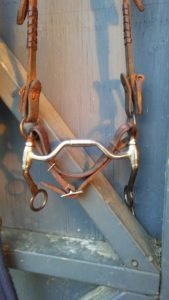
This is the same thing for bigger bits. Bigger bits are meant for refinement. They are only meant to be used once the snaffle has been mastered. They can be used to create a greater degree of softness in the right hands, but there must a certain degree of softness achieved before the transition can be made. One cannot achieve a greater degree of softness when one has zero softness at all. A horse must be able to work off leg cues, seat cues, and very light hands before leverage is introduced. If the horse is bolting, it needs better training, not a bigger bit. If a horse is rearing or bucking it lacks forward motion and it needs to be softened at the poll and taught how to disengage its hind end not given a bigger bit to brace against.
I often get asked how I got Moose soft enough to ride in a snaffle all the time. My answer? By riding her in a snaffle all the time.
After 3 years I am only just starting to introduce leverage. Yeah, she is a brat some days. But I barely even use the snaffle on a good day. So, when she is a brat and I have to use the bit three times as much as normal, I’m still not using it that much and I’m certainly not cranking on her.
What does this all mean?
It means we’ve got to find a way to stop falling down this never-ending, over-bitting, rabbit hole. Do not misinterpret me though. Bits are not evil. Big bits, when used properly, are not evil. So don’t go saying that I said bits are evil. This reminds me that I need to do a blog on bitless riding and why it’s a pet peeve of mine. But — back on topic — we, as equestrians, need to educate ourselves and stop using the big bit band-aid as a fix all cure for every rock-mouthed, bolting, nutcase that crosses our path. They invented snaffles for a reason and (in most cases) if a horse can’t be controlled in a snaffle, then it has no business being in a leverage bit.
If a horse can’t be controlled in a snaffle, then it has no business being in a leverage bit.
Tweet






